Topcom Twintalker 6000 Handleiding
Bekijk gratis de handleiding van Topcom Twintalker 6000 (24 pagina’s), behorend tot de categorie Babyfoon. Deze gids werd als nuttig beoordeeld door 106 mensen en kreeg gemiddeld 4.6 sterren uit 53.5 reviews. Heb je een vraag over Topcom Twintalker 6000 of wil je andere gebruikers van dit product iets vragen? Stel een vraag
Pagina 1/24

TwinTalker 6000
User Guide
1
2
11
9
4
10
6
3
7
12
8
5
U8006155/1
1. DESCRIPTION
(see front cover)
2. INSTALLATION
2.1. Removing/Installing the Belt Clip
1. To remove the clip from the unit, push up on the belt clip (2) while pulling
the clip tab (1).
2. When re-installing the belt clip, a click indicates the BeltClip is locked into
position.
2.2. Battery Installation
1. Remove the belt clip (2).
2. Pull the Battery Cover Tab (4) and remove the Battery Cover (3).
3. Install the battery Pack.
Ensure the metal contacts on the site of the battery are facing outwards from
the radio to connect with the contact on the battery door.
4. Re-install the Battery Cover (3) and Belt Clip (2).
Note: Instead of the supplied battery pack, the TT6000 can be used with
3xAAA standard rechargeable batteries. Follow the polarity as shown when
installing. You are not able to use the desktop charger with standard recharge-
able AAA batteries installed
Important :
Dispose of the batteries at a designated battery disposal unit and not in
the household waste.
Remove the batteries when you do not use your radio for a longer period.
Do not try to diassemble the battery pack.
Do not shortcircuit & dispose of in fire.
1. Microphone
2. Monitor button
3. Talk button
4. Call button
5. Ear/mic/connector
6. Antenna
7. LCD display
8. Up/Down button
9. Menu/Lock button
10.On/Off button
11.Scan button
12.Speaker
2
4
3
1
2.3. Desktop charger
The desktop charger provides drop-in charging conveniency
1. Put the desktop charger on a flat surface.
2. Plug one end of the supplied adapter into the electric socket and the other
end into the connector on the backside of the desktop charger.
3. Put the radio in the charger as indicated.
4. The charging LED will turn on if it’s properly inserted and charging.
5. It will take about 8 to 10 hours to fully charge the batteries
3. LCD SCREEN
a. RX icon. Displayed when receiving a signal.
b. TX icon. Displayed when transmitting a signal.
c. Displays the current VOLUME LEVEL.
d. CTCSS code. Changes from 1 to 38 as
selected by user.
e. Displayed during the CHANNEL SCAN mode.
f. Displays during the VOX mode.
g. Button lock symbol
h. The current battery level charge.
i. Channel number. Changes from 1-8 as
selected by user.
4. GETTING STARTED
4.1. Turning the Unit ON/OFF
To activate; press and hold the POWER button . The unit will “beep” and the
LCD Screen will display the current channel.
To switch off; press and hold the POWER button again. The unit will “beep”
and the LCD Screen will turn blank.
hgec
f
b
id a
4.2. Adjusting Speaker Volume.
The Speaker Volume can be adjusted using the up /down key . The
Speaker Volume level is displayed on the LCD(see §3)
4.3. Receiving a Signal
The unit is continuously in the RECEIVE mode when the unit is ON and not
transmitting. When you receive a signal on the current channel, the RX icon is
displayed (see §3)
4.4. Transmitting a Signal
1. Press and hold the TALK button to TRANSMIT. The TX icon will be
displayed
2. Hold the unit in a vertical position with the MICROPHONE 5 cm from the
mouth and speak into the microphone.
3. Release the TALK button when you have finished transmitting.
NOTE: To check the channel activity; press and hold the MONITOR button.
You’ll hear static if the channel is unoccupied. Don’t TRANSMIT if someone is
talking on the channel.
IMPORTANT: In order for other people to receive your transmission, they must
also be on the same channel and have set the CTCSS code you are currently
using. Refer to the ‘Changing Channels’
5. OPERATION
5.1. Changing Channels
The PMRS has 8 available channels.
To change channels:
1. Press the MENU button once, the current channel number flashes on
the LCD Screen.
2. Press the UP or DOWN button to change the channel.
3. Press the MENU button to confirm the channel selection and go to
CTCSS SUB-CHANNEL SELECTION mode, or press the TALK button to
select the desired channel and return to NORMAL mode.
5.2. CTCSS (Continuous Tone Coded Squelch System)
The 2 digit CTCSS code corresponds to a specific tone frequency the radio
emits. Two users, with the same channel and CTCSS set can hear one
another.They will not
be able to hear anyone else on the channel unless the
other radios have the same exact CTCSS code enabled.

The Twintalker 6000 has 38 CTCSS codes available.
1. Press the MENU button twice, the CTCSS code will flash
2. Press the UP or DOWN button to move to another code.
3. Press the TALK button to confirm your selection and return to the NORMAL
mode.
4. To confirm and shift to the next option, press the MENU button .
Note: Any PMR set on the same channel can receive and listen to the
conversation, also when the other use a CTCSS code.
5.3. Monitor
You can use the MONITOR feature to check for weaker signals in the current
channel.
• Press the MONITOR button for normal monitoring .
• Press and hold the MONITOR button. After 3 seconds you can release
the button. You are now continuous monitoring the channel until you push
the TALK button.
5.4. Button Lock
Press and hold the MENU button for 3 seconds to activate or deactivate
the BUTTON LOCK mode. The BUTTON LOCK icon is displayed on the LCD
Screen.Press and hold the MENU button again to deactivate BUTTON
LOCK
5.5. VOX Selection
The PMRS is capable of voice activated (VOX) transmission. In VOX mode, the
radio will transmit a signal when it is activated by your voice or other sound
around you. VOX operation is not recommended If you plan to use your radio
in a noisy or windy environment.
1. Press the MENU button 3 times, the VX icon will blink on the LCD
Screen.
2. Press the UP button to turn the VOX feature ON, or press the DOWN
button to turn the VOX feature OFF.
3. In the VOX mode, the VX icon will be displayed.
4. To confirm your selection and return to the NORMAL mode, press the TALK
button.
5. To confirm and shift to the next option, press the MENU button.
NOTE: To save power, the unit will not turn ON the LCD Screen light when in
the VOX mode.
5.6. Channel Scan
CHANNEL SCAN performs searches for active signals in an endless loop from
channel 1 to 8.
1. Press the SCAN S button to activate CHANNEL SCAN.
2. When an active signal (one of 8 channels) is detected, CHANNEL SCAN
pauses and you will hear the active signal.
3. Press the TALK button to communicate through the active signal channel
and CHANNEL SCAN is deactivated.
4. When an active signal (one of 8 channels) is detected, press the UP or
DOWN button to bypass the current channel and continue to search for
another active channel
5. Press the SCAN button to deactivate CHANNEL SCAN mode.
5.7. Battery Charge Level/Low Battery Indication
• The BATTERY CHARGE LEVEL is indicated by the number of squares
present inside the BATTERY icon on the LCD Screen.
•When the BATTERY CHARGE LEVEL is low, the BATTERY icon will
flash to indicate that the batteries need to be replaced or recharged.
5.8. .Headset use
You can operate the PMR using a headset.Plug the headset into the EAR/MIC
jack (5).
5.9. Sending Call Tones
You can use Call Tones to alert the other user to identify yourself. You can also
use Call Tones to signal the beginning or the end of a transmission.
1. Press and release the CALL button, the CALL TONE continues for 3
seconds.
2. Your CALL TONES will transmit to nearby receivers set to the same
channel.
6. SPECIFICATIONS
7. SAFETY INSTRUCTIONS
7.1. Damage antenna.
Do not use any communicator that has a damaged Antenna. If a damaged
antenna comes in contact with the skin, a minor burn may result.
7.2. Batteries.
As batteries can cause property damage and/or bodily injury such as burns if
conductive material such as jewelry, keys or beaded chains touches exposed
terminals. The material may complete an electrical circuit (short circuit) and
become quite hot. Exercise care in handling any charged battery, particularly
when placing it inside a pocket, purse or other container with metal objects.Do
not replace or charge batteries in a potentially explosive atmosphere. Contact
sparking may occur while installing or removing batteries and cause an
explosion.
7.3. For vehicles with air bag.
Do not place your Communicator in the area over an air bag or in the air bag
deployment area. Air bags inflate with great force. If a communicator is placed
in the bag deployment area and the air bag inflates, the communicator may be
propelled with great force and cause serious injury to the occupants of vehicle.
7.4. Potentially Explosive Atmospheres.
Turn your communicator off when in any area with a potentially explosive
atmosphere, unless it is a type specifically qualified for such use. Sparks in
Channels
CTCSS Sub-channel
Output Power (TX)
Range
8 Channels
38 for each Channel
Output Power :0.5W (Maximum)
Up to 3 Km (open field)
such areas could cause an explosion or fire resulting in bodily injury or even
death.
7.5. Blasting caps and areas
To avoid possible interference with blasting operation, turn your communicator
off near electrical blasting caps or in a ‘blasting area’ or in areas posted : ‘Turn
off two way radio’. Obey all signs and instructions.
Note : Areas with potentially explosive atmospheres are often, but not always,
clearly marked. They include fueling areas such as below deck on boats, fuel
or chemical transfer or storage facilities; areas where the air contains
chemicals or particles, such as grain, dust or metal powders; and any other
area where you would normally be advised to turn off your vehicle engine.
7.6. Electromagnetic Interference/Compatibility:
Nearly every electronic device is susceptible to electromagnetic interference
(EMI) if inadequately shielded, designed or otherwise configured for
electromagnetic compatibility.
Turn your unit OFF in any facilities where posted notices instruct you to do so.
Hospitals or health care facilities may be using equipment that is sensitive to
external RF energy.
Turn your unit OFF when on board an aircraft when instructed to do so. Any
use of the unit must be accordance with airline regulations or crew
instructions.
8. CARE AND MAINTENANCE
To clean the unit, wipe with a soft cloth dampened with water. Don’t use a
cleaner or solvents on the unit; they can harm the case and leak inside,
causing permanent damage. Battery contacts may be wiped with a dry lint-free
cloth. If the unit gets wet, turn it off and remove the batteries immediately. Dry
the BATTERY COMPARTMENT with a soft cloth to minimize potential water
damage. Leave the cover off the BATTERY COMPARTMENT overnight or until
completely dry. Do not use the unit until completely dry.
9. WARRANTY
This equipment comes with a 24-month warranty. The warranty will be
honoured on presentation of the original or a copy bill or receipt, provided the
date of purchase and the unit type are indicated.
During the time of the warranty Topcom will repair free of charge any defects
caused by material or manufacturing faults. Topcom will at its own discretion
fulfil its warranty obligations by either repairing or exchanging the faulty
equipment.
Any warranty claims will be invalidated as a result of intervention by the buyer
or unqualified third parties.
Damage caused by inexpert treatment or operation, and damage resulting
from the use of non-original parts or accessories not recommended by
Topcom is not covered by the warranty.
The warranty does not cover damage caused by outside factors, such as
lightning, water and fire, nor does it apply if the unit numbers on the equipment
have been changed, removed or rendered illegible.
Note: Please do not forget to enclose your receipt if you return the equipment.
www.topcom.net
The CE symbol indicates that the unit complies with the essential
requirements of the R&TTE directive.
Free to use in:
Holland, Ireland, Portugal, Belgium, France, UK, Finland, Greece,
Germany, Austria, Spain, Czech republic, Denmark, Sweden, Italy, Norway,
Switzerland, Luxembourg
This product is in compliance with the essential requirements and other relevant provisions of the R&TTE directive 1999/5/EC.
The Declaration of conformity can be found on :
http://www.topcom.net/support/declarations/

TwinTalker 6000
Handleiding
1
2
11
9
4
10
6
3
7
12
8
5
U8006155/2
1. BESCHRIJVING
(Zie voorpagina)
2. INSTALLATIE
2.1. Verwijderen en installeren van de riemclip
1. Schuif de riemklip (2) naar voor terwijl u de fixeerlip (1) naar U toe trekt.
2. Bij het terugplaatsen van de riemklip (1) hoort u een klik ter bevestiging.
2.2. Installatie van de batterijen
1. Verwijder de riemclip (2).
2. Trek aan het lipje van de batterijafdekking (4) en verwijder het afdekplaatje
van het batterijvak (3).
3. Plaats het batterijpak.
Zorg ervoor dat de metalen contacten aan de zijkant van de batterij weg van
de radio zijn gericht om contact te maken met de batterijafdekking.
4. Plaats het afdekplaatje (3) terug over het batterijvak en monteer de riemclip (2).
Opmerking: In plaats van de meegeleverde batterij, kan de TT6000 ook
worden gebruikt met 3 standaard oplaadbare AAA-batterijen. Let bij het
plaatsen van de batterij op de polariteit zoals geïllustreerd. U kunt de
bureaulader niet gebruiken met standaard oplaadbare AAA-batterijen
Belangrijk:
Gooi de batterijen bij het klein gevaarlijk afval en niet bij het gewone
huisvuil. Verwijder de batterijen wanneer u uw radio langere tijd niet
gebruikt. Haal het batterijpak niet uiteen.
Maak geen kortsluiting & gooi het niet in vuur.
1. Microfoon
2. Monitor toets
3. Zend toets (PTT)
4. Oproep toets
5. Hoofdtelefoonaansluiting
6. Antenne
7. LCD display
8. Omhoog/Omlaag toets
9. Menu toets
10.Aan/Uit toets
11.Scan toets
12.Luidspreker
2
4
3
1
2.3. Bureaulader
De bureaulader zorgt voor extra laadgemak
1. Plaats de bureaulader op een vlak oppervlak.
2. Steek het ene uiteinde van de meegeleverde adapter in het stopcontact en
het andere in de aansluiting op de achterkant van de bureaulader.
3. Plaats de radio in de lader zoals aangeduid.
4. De laad-LED begint te branden als de radio correct in de lader is geplaatst
en wordt geladen.
5. Het duurt ongeveer 8 tot 10 uur om de batterijen volledig op te laden.
3. LCD DISPLAY
a. Zend indicatie
b. Ontvangst indicatie
c. Volume
d. CTCSS code. Instelbaar van 1 tot 38.
e. Kanaal Scan indicatie
f. VOX indicatie
g. Klavier vergrendeling icoon
h. Batterij indicatie
i. Kanaal nummer. instelbaar van 1 to 8.
4. BEDIENING
4.1. Aan/Uit schakelen.
Druk op de Aan/Uit toets tot u een bieptoon hoort. De display zal het
ingestelde kanaal weergeven.
Druk opnieuw op de Aan/Uit toets tot de display informatie verdwijnt.
hgec
f
b
id a
4.2. Luidspreker volume aanpassen.
Het luidspreker volume kan aangepast worden doormiddel van de Omhoog
/Omlaag toets. Het geselecteerde volume wordt weergegeven in de
display.(zie §LCD Display)
4.3. Een signaal ontvangen.
Aangeschakeld bevindt het toestel zich steeds in ontvangst toestand.
Wanneer een signaal wordt ontvangen verschijnt de ontvangst indicator op de
display. (zie §LCD Display)
4.4. Een signaal zenden.
1. Druk op de Zend-toets. De Zend Indicator (a) wordt weergegeven op de
display.
2. Hou het toestel vertikaal op 5 cm van de mond en spreek in de microfoon.
3. Laat de Zend toets los wanneer men het zenden wil beëindigen.
NOTA: Om de activiteit op het ingestelde kanaal te controleren, drukt op de
MONITOR toets . U zal een ruis horen wanneer het kanaal niet wordt
gebruikt. Zend geen signaal uit wanneer het kanaal reeds gebruikt wordt.
BELANGRIJK: Wanneer andere gebruikers uw uitgezonden signaal wensen te
ontvangen dient hun toestel ingesteld te staan op hetzelde kanaal en CTCSS
code. Zie ‘Kanaal selecteren’.
5. WERKING
5.1. Kanaal selecteren
De PMR heeft 8 kanalen beschikbaar.
Om een kanaal te selecteren:
1. Druk één maal op de MENU toets, het ingestelde kanaal knippert op de
display.
2. Druk de OMHOOG of OMLAAG toets om het gewenste kanaal te
selecteren.
3. Druk opnieuw op de MENU toets om de instelling te bevestigen en
door te gaan naar de volgende instelling ‘CTCSS’ of druk op de Zend-toets
om de instellingen te bevestigen en terug te keren naar het basisscherm.
5.2. CTCSS (Continuous Tone Coded Squelch System)
Deze 2 digit Code komt overeen met een specifieke toon welke de PMR
uitzendt tijdens een oproep. Als de CTCSS code is ingesteld kunnen geen
Product specificaties
| Merk: | Topcom |
| Categorie: | Babyfoon |
| Model: | Twintalker 6000 |
Heb je hulp nodig?
Als je hulp nodig hebt met Topcom Twintalker 6000 stel dan hieronder een vraag en andere gebruikers zullen je antwoorden
Handleiding Babyfoon Topcom

7 Mei 2023

7 Mei 2023

30 April 2023

28 April 2023

25 April 2023

22 April 2023

5 April 2023

3 April 2023

19 Maart 2023

15 Maart 2023
Handleiding Babyfoon
- Cresta
- Overmax
- Manhattan
- EMOS
- Konig
- Tommee Tippee
- Jablotron
- Owlet
- Babyfon
- Switel
- Concept
- Tefal
- Lindam
- Kodak
- Nedis
Nieuwste handleidingen voor Babyfoon
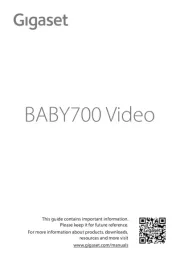
8 September 2025
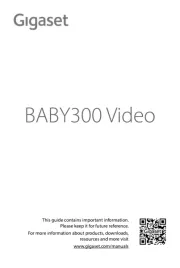
8 September 2025

8 September 2025
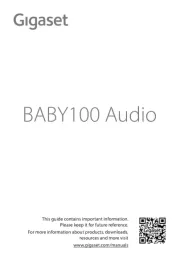
8 September 2025
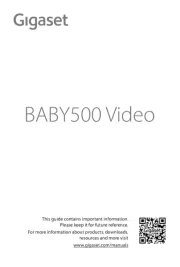
8 September 2025
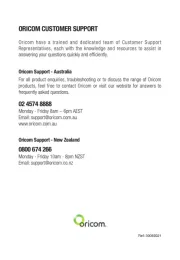
26 Augustus 2025
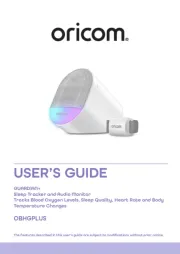
25 Augustus 2025
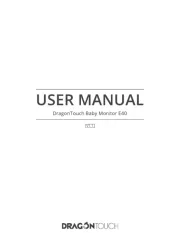
4 Augustus 2025
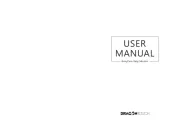
4 Augustus 2025
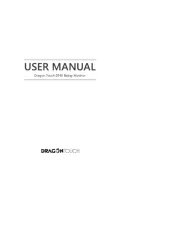
29 Juli 2025